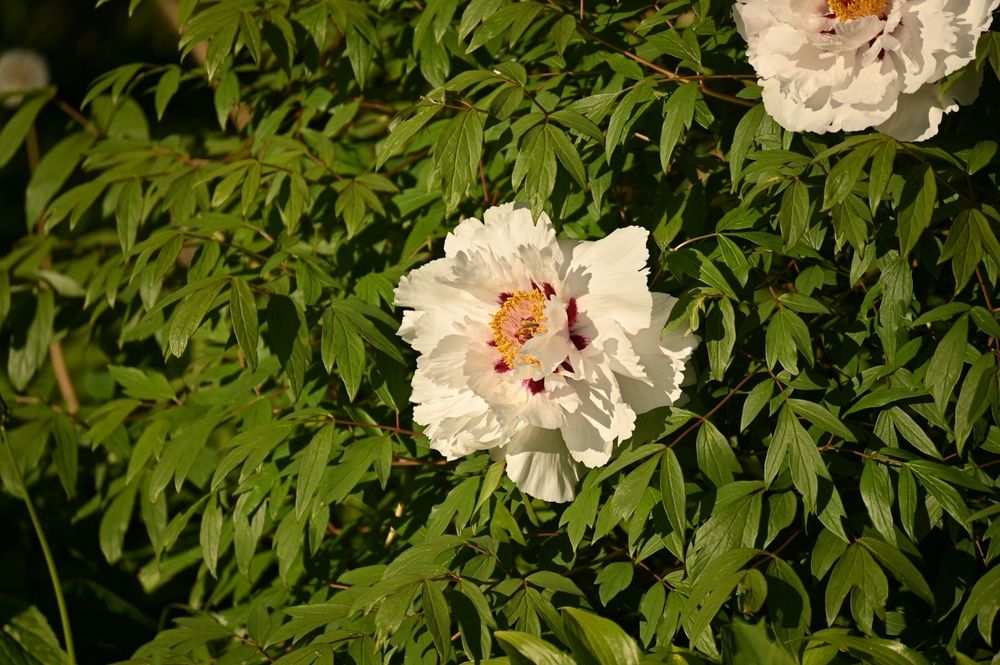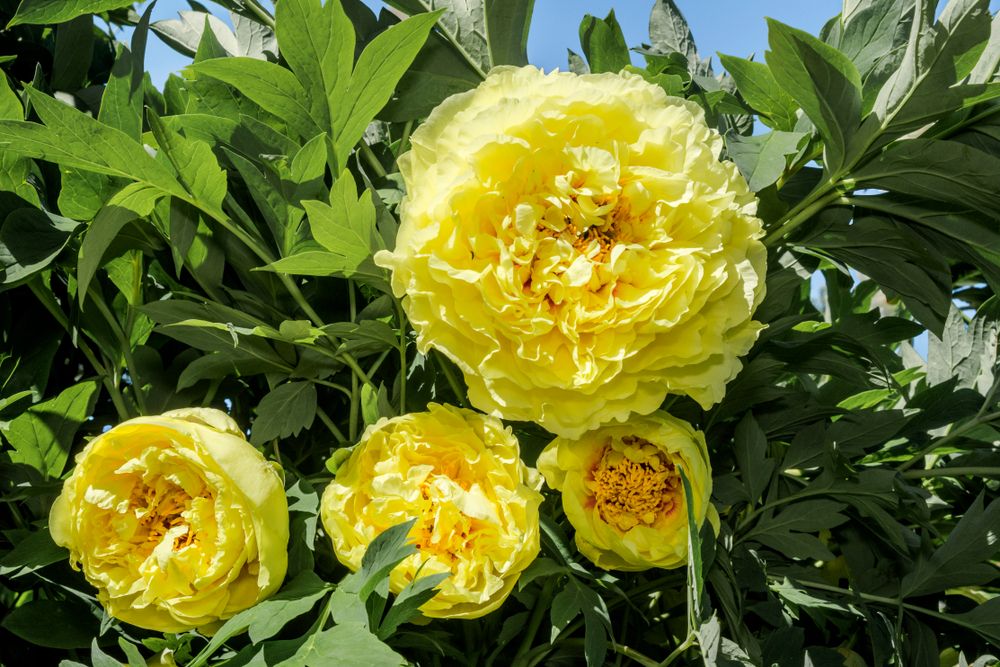Whether you're a seasoned gardener or just starting, chances are you've planted peonies. These beautiful flowers come in shades of pink, white, and red, with blooms that last for about a week.
Pruning your peonies will help them grow healthy and strong for years. But, should you cut them back in the fall? Keep reading to learn when and how to care for different types of peonies for the best results.
Cutting Back Your Peonies
Image credits: Tatevosian Yana via Shutterstock
Peonies make an ideal addition to any garden. While peonies are resilient and low-maintenance, some gardeners still wonder whether cutting back the stems at the end of fall is necessary. This answer depends on the type of peony you have.
Peonies come in three different types: tree peonies, herbaceous peonies, and intersectional hybrids. All three types have unique characteristics that set them apart from each other and make them all incredibly lovely. Here are some pruning tips on each variety:
Tree Peony
Image credits: Violeta Beigiene via Shutterstock
The tree peony (Paeonia suffruticosa), often called woody peony, is a large perennial shrub native to China. Its large, delicate petals and vibrant colors make it an eye-catching addition to any garden or home. The tree peony thrives in temperate climates and requires partial shade and well-draining soil to grow and flourish.
If you have a tree peony, it is best to leave it alone in the fall. This shrub typically goes dormant over winter, and new growth is revived in the spring on woody stems. You should not cut back in the fall as the stems are left to generate the peony flowers in the spring.
The best time to prune your tree peony is in the spring after new growth has begun. To prune your shrub, cut back the old, dead woody stems. This will help keep your plant looking neat and tidy, while also encouraging new growth and buds. Additionally, you can shape your tree peonies as you see fit, removing any thick or excess growth at any time of the year.
To care for your tree peony, water it regularly and give it some mulch. Doing so is especially important during the summer when it is actively growing. If you have planted your peony shrub in the spring, it may not have had the time to develop a strong root system. In that case, it should be planted or moved in the fall.
Herbaceous Peony
Image credits: S.O.E via Shutterstock
The herbaceous peony (Paeonia lactiflora) is a beautiful flower known for its longevity and durability. With its broad leaves and sturdy stems, this gorgeous plant is perfect for adding some color to your garden or landscape. Whether you're looking for something bright and cheerful, or a more subdued and understated beauty, the peony has it all!
A herbaceous peony should be cut back to the ground in the fall. By cutting them back in autumn, you can prevent overwintering diseases like peony wilt. You also encourage new growth, leading to even more beautiful blooms in the spring.
To start, cut back the stems of your peonies to about 1 to 2 inches in length. It's important to be careful not to cut too close to the crown, as this can cause damage and disease.
If there is no sign of fungal damage on your stalks or leaves, you can simply compost them. However, if you notice any signs of disease, it's best to discard them instead.
In addition, you may want to apply a light layer of mulch over the crown after the ground has frozen for extra protection during the winter months. Just remember to remove this early in the spring as it can prevent your peonies from thriving.
Growing the herbaceous peony is relatively easy, albeit slow. These plants will flourish in well-drained soil with plenty of sunshine. However, these peonies do not like disturbances. So, once planted, it's best not to move them.
Intersectional Peony
Image credits: Nick Pecker via Shutterstock
Lastly, there are the intersectional hybrids (Paeonia cvs). These beautiful flowers are a cross between tree and herbaceous peonies and have the best qualities of both types. Like tree peonies, intersectional hybrids produce large blooms with striking petals in various colors.
Same as with the herbaceous peony, intersectional peony plants can be cut back in autumn to prevent overwintering wilting diseases, while also encouraging new growth.
Simply cut your peony stems down to about a couple of inches in length, being careful not to cut too close to the crown.
If you are interested in growing your own intersectional peonies, there are several things to keep in mind. First, they need full sun to thrive. Additionally, they require plenty of water and well-drained, fertile soil to grow strong and healthy.
Fun fact: Intersectional peonies are often called ‘Itoh’ peonies out of respect for Japanese breeder Toichi Itoh. He first created the intersectional hybrids in the 1940s.
In Summary
Now that you know how to prune your peonies, it's time to start!
If you want your peonies to bloom beautifully and last long into summer, you need to know which variety you have. Whether or not you should cut back your peonies in the fall depends on the type you have, and if they are already established, so be sure to do your research. Talk to your local garden expert for guidance if you need more information.
With their showy blooms, strong stems, and pleasant aroma, peonies make excellent landscape plants. And with proper care, peonies can live for decades!
Make sure to share this article with your friends and family and leave a comment below, letting everyone know how your experience goes. Happy gardening!





